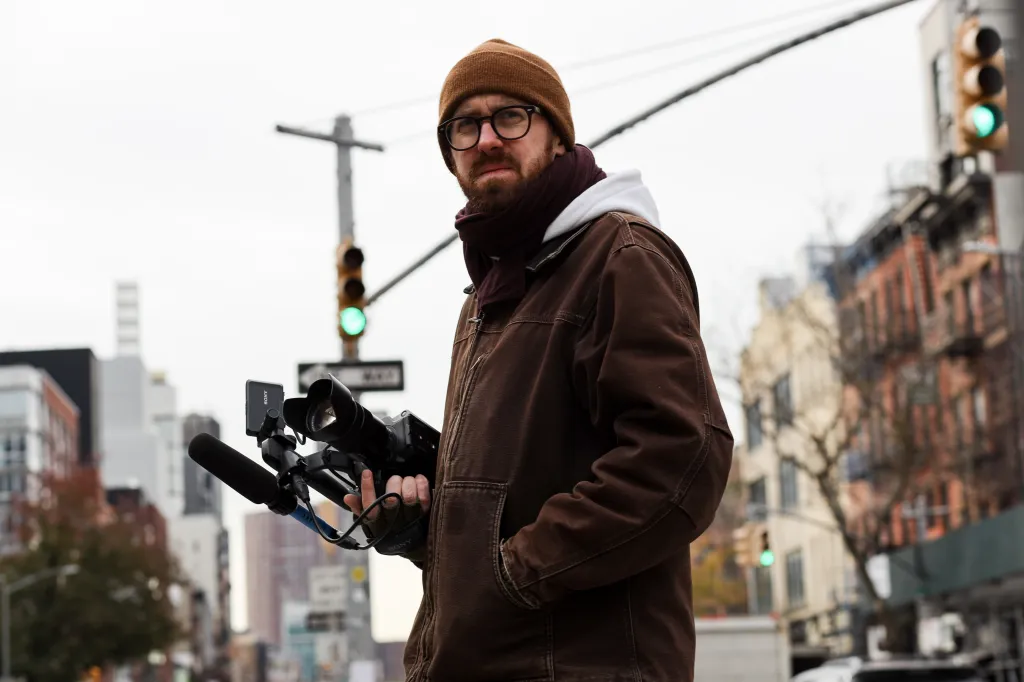By the time you read this, it will have been a few weeks into an arduous semester for many of you, and the streaming television show from HBO for which I advocate will have been long finished. However, its impact and implications are undeniable and worth exploring to foster the next generation of inquisitive observers of human condition.
“How To with John Wilson” is a production from of a denizen of Ridgewood, Queens. For three seasons, he has manufactured narratives that consider an initially obvious prompt begging episodic variations on self-efficacy to further mine actualization. The general format is a voiceover narration over raw footage that is shot by Wilson and his immaculate production unit.
In the company of executive producer Nathan Fielder of the celebrated satire/mockumentary series “Nathan For You,” Wilson has, in a very syncopated audio-visual expression, ventured into such abstract territory that his short video essays not only deliver groundbreaking access to the eccentric faces of this tumultuous metropolis — they also throw outmoded queries an extensively imaginative bone. He will answer the question posed, all while pulling out all the stops to inevitably scintillate you with the perverse benign.
In an episode titled, “How To Cover Your Furniture,” Wilson itemizes furniture care and further extrapolates it beyond reasonable belief. This episode features a resident of New York City that aims to reclaim his foreskin who has built an apparatus to extend his [umm… dermis.] Admittedly, this program is not safe for the hyper-sensitive, but the nuance in entertaining a question is rewarding.
Wilson’s final episode was titled “How To Track Your Package.” This episode did not discuss so much as a transactional interaction nor the familiar trope of a phallic joke, but instead rendered meaningful insight on identity and ownership of industry. Wilson discovers how to end an award winning show (Cinema Eye Honours) by painstakingly orchestrating its swan song. The program that captured NYC residents and casual national television viewers showcased environments, landmarks, businesses – and most importantly – behaviors that exist within three stops of our bus routes, with people who we often make zero eye contact with, acting in ways only a practiced set of eyes/cameras could capture – is nothing short of remarkable.
I know John Wilson. Maybe we are friends. After all, we both reside and participate in localized structures. Before 2020, he would have a Pacifico with a burger at a bar where I worked that is formerly known as Paradise Lounge. His friends would come and watch the channel seven as I aired Jeopardy for the 7PM crowd. One day he had a really big party with his friends. One of them was my ER nurse when I was sent to Wyckoff Heights after a bad seizure. It is funny that we recognized one another.
You’d think that an unironic local hero would want to continue this incredibly accessible (sans HBO dues) and unapologetically genuine look into peoples’ lives. When asked why he ended the show, he says that he didn’t want New Yorkers to be paranoid about being filmed, that he didn’t want to be recognized as a bad faith agent.
That party at the old bar I worked at was the wrap party for his first season. Since then, he has produced three total seasons of immaculate content with his tremendous team. There is an entire subreddit that dissects the locations featured in Wilson’s NYC centric movies. In it, several people express their lamentation as the show comes to an end.
Many pontificate the ramifications of being filmed by Wilson or a videographer on his staff – some covet the prospect of a feature while others are frightened to be exposed as remarkable creatures.
Through an esteemed lens that could only be arranged by a seasoned videographer and archivist, Wilson responds to a call to explain the fascination with the mundane. Wilson’s elation is audibly neutral, but his visuals and score decisions (see: Raymond Scott, Portofino 2) are sublime. Everything is kaleidoscopic, and possibly triggering.
A seizure is effectively an electrical storm in a person’s brain. If I were contributing to a hypothetical Wilson episode titled “How To Localize A Story,” I’d absolutely run with the abstract association between disturbances in neural pathways and the importance of triangulating oneself in an unfamiliar setting. The show quietly demands that the viewer consider what their characteristics and/or actions would entail post documentation. What if he did explore a bar with questions on the screen, its writer, his seizure, and the cool nurse?
John Wilson is taking the wayward bead-maze one would find at an underwhelming waiting room to inimitable lengths. He has caught lightning in a bottle, and for those super close to this phenomena in the heart of Ridgewood, Queens: it just hits.
How To with John Wilson is available on the Max streaming platform.












[…] How To Localize A Story […]